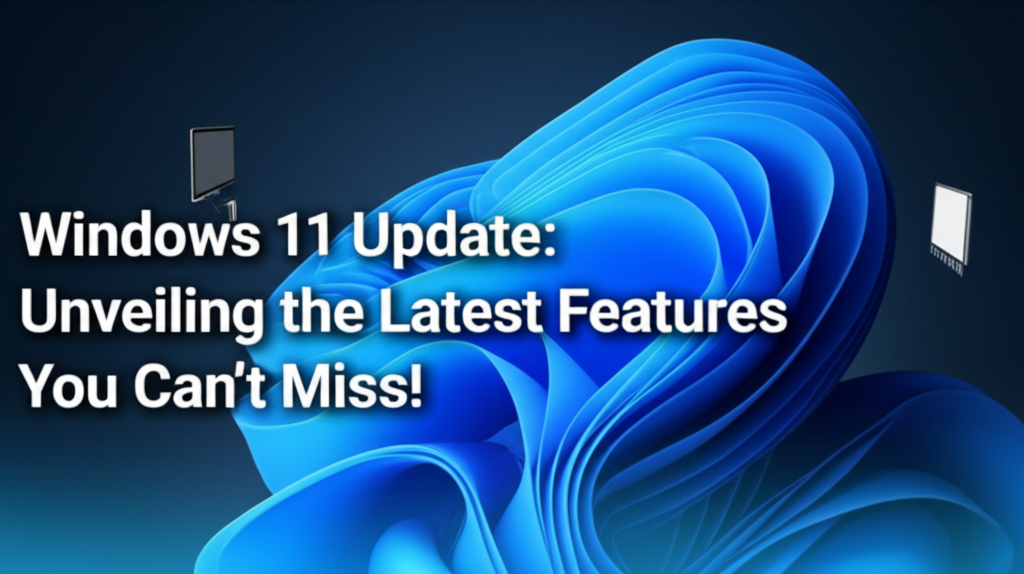Introduction to Windows 11
In October 2021, Microsoft unveiled Windows 11, ushering in a new era of operating system design and functionality. It was not just another version of Windows; it signified a major shift in how users would interact with their devices. With its sleek aesthetic, advanced features, and improved performance, Windows 11 set out to redefine user experience in computing.
With each update, Microsoft aimed to enhance productivity, gaming, and connectivity while ensuring user security and privacy. The latest updates have introduced several features that resonate with user needs and preferences, making it essential to explore what’s new.
The Evolution of Windows and the Journey to Windows 11
Before diving into the specifics of Windows 11’s latest features, it’s crucial to understand the evolution of Windows.
- Windows 1.0 debuted in 1985 as a graphical user interface for MS-DOS.
- Windows 95 brought significant changes, introducing the Start menu and taskbar.
- Windows XP, released in 2001, became immensely popular due to its user-friendly interface and stability.
- After several iterations, Windows 10 emerged in 2015, incorporating features from both modern and classic Windows experiences.
The transition to Windows 11 was marked by a fresh design, a focus on center-aligned taskbars, and rounded corners, embodying a modern look while building on the legacy of its predecessors.
Key Features of Windows 11
1. Redesigned User Interface
The first thing users notice about Windows 11 is its new user interface (UI). The Start menu and taskbar are now centered, offering a modern look reminiscent of mobile operating systems. This design aims to provide a streamlined and intuitive experience.
Key elements include:
- Rounded Corners: Windows and menus have softer edges, contributing to a more approachable feel.
- New Icons: A revised set of icons enhances usability and modernity.
- Revamped Taskbar: Includes improved functionality, such as integrating notifications and quick access to settings.
2. Enhanced Multitasking Features
Windows 11 introduces several features designed to improve multitasking, one of the core aspects of productivity for many users.
- Snap Layouts: This feature allows users to organize open windows into pre-defined layouts, making it easier to work with multiple applications.
- Snap Groups: Windows remembers the layouts you use and allows quick switching between Snap Groups.
- Virtual Desktops: Users can create separate desktops for different projects or workflows, each with its own custom wallpapers and settings.
3. Integration with Microsoft Teams
As remote work becomes more prevalent, the integration of Microsoft Teams directly into Windows 11 is a noteworthy update. Users can easily chat, call, or video conference with friends, family, or colleagues directly from the taskbar, making communication more accessible than ever.
4. Widgets and News Feed
Widgets in Windows 11 provide personalized, at-a-glance information. Users can access news, weather, calendar events, and more through a customizable feed. This feature reflects a growing trend toward integrating information seamlessly and visually.
5. DirectStorage for Faster Gaming
For gamers, Windows 11’s DirectStorage feature is a game-changer. This allows games to load more quickly by enabling them to pull assets directly from the SSD, significantly reducing load times. Combined with the Auto HDR feature, which enhances lighting and color in games, Windows 11 offers a superior gaming experience.
6. Improved Touch and Pen Support
With the evolving nature of devices, Touch and Pen support in Windows 11 has been significantly enhanced. This feature caters to tablet users and those who prefer using styluses, enabling smoother navigation and more accurate input options, along with improved gesture controls.
7. Enhanced Security Features
Windows 11 prioritizes security by requiring specific hardware features, such as TPM 2.0, for better protection against malicious attacks. New security protocols and improved Windows Hello make user authentication more secure while facilitating ease of access.
8. Enhanced Virtual Desktops
The ability to create and manage multiple virtual desktops has received an upgrade in Windows 11. Each desktop can have its own unique backgrounds and app settings, allowing users to keep personal and workspaces separate.
Lesser-Known Features Worth Noting
1. Redesigned Microsoft Store
The Microsoft Store has undergone a significant redesign for easier navigation and a better shopping experience. It now supports a wider array of apps, including traditional Win32 applications, making it more versatile than ever.
2. Clipboard History and Syncing
Windows 11 enhances the clipboard feature, allowing users to access clipboard history and sync items between devices. This makes it simpler to manage copied text across various devices.
3. Focus Sessions
Focus Sessions help users concentrate on tasks while minimizing distractions. By integrating with the Clock app, it allows users to set specific work intervals, encouraging a balanced approach to productivity.
4. New Voice Typing Features
Windows 11 offers improved voice typing capabilities, allowing greater accuracy and ease. The feature supports fluid dictation, making it a useful tool for creating documents without needing to type.
5. HDR Support for External Monitors
For those who use external displays, Windows 11 provides improved HDR support, allowing better visuals and color accuracy when connected to high-resolution monitors or TVs.
The Importance of Regular Updates
Keeping Windows 11 up to date is crucial. Each update aims to fix bugs, improve security, and introduce new features. Users can choose to schedule updates during off-hours, ensuring minimal disruption to their productivity.
How to Keep Windows 11 Updated
- Automatic Updates: Ensure that automatic updates are enabled in the settings.
- Check for Updates Manually: Go to Settings > Windows Update to check for the latest updates.
- Utilize Windows Insider Program: For those eager to test new features, joining the Windows Insider Program allows users to get a glimpse of upcoming updates.
System Requirements for Windows 11
Understanding the system requirements is essential for a smooth transition to Windows 11. Here’s a brief overview:
- Processor: 1 GHz or faster with at least two cores on a compatible 64-bit processor.
- RAM: 4 GB or more.
- Storage: 64 GB or larger storage device.
- TPM: TPM version 2.0 is required for improved security.
- Graphics Card: DirectX 12 compatible graphics with a WDDM 2.0 driver.
Addressing Compatibility Issues
Despite the excitement surrounding Windows 11, some users may face compatibility issues. Here are common concerns and how to overcome them:
Legacy Applications
While most applications run seamlessly on Windows 11, older applications might encounter difficulties. Running them in compatibility mode can resolve many issues.
Hardware Compatibility
Not all hardware may be compatible with Windows 11. Use the PC Health Check app from Microsoft to determine if your device meets the requirements.
Access Issues
Some users may experience difficulties accessing certain features. Ensuring that your device is updated will help manage these issues effectively.
Community Feedback and Response
The community response to Windows 11 has been a mixed bag. Many users appreciate the fresh design and robust features, while some have voiced concerns about the stricter hardware requirements and taskbar limitations.
User Forums and Reactions:
- Positive Feedback: Many users praise the improved aesthetics and productivity features.
- Concerns Raised: Some feedback centers around the demise of certain features like Live Tiles from the Start Menu.
Microsoft’s ongoing communication and regular updates demonstrate its commitment to addressing feedback and improving user experience.
Conclusion
Windows 11 represents a significant leap forward in operating system design, prioritizing user experience, security, and productivity. With frequent updates introducing exciting features, it’s crucial to stay informed about these changes.
As technology evolves, Windows 11 aims to meet the needs of a diverse user base while fostering a modern computing environment. Embracing these updates will ensure that users can take full advantage of what Windows 11 has to offer, ultimately enhancing their digital experience.
From its redesigned interface to enhanced gaming capabilities and improved multitasking functionalities, Windows 11 invites users to explore the next generation of personal computing. Don’t miss out on the latest developments; keep your system updated and dive into the features that align with your needs!

